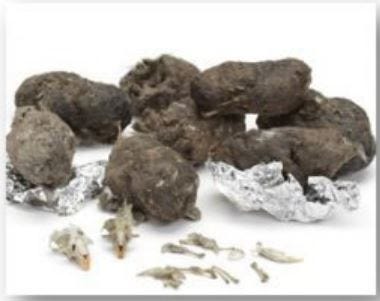The world of nature often conceals its secrets in the most unexpected places, and one such enigmatic treasure trove is the owl pellet. These seemingly unremarkable regurgitated masses hold a wealth of information waiting to be unearthed. Today we will look at the fascinating world of owl pellet dissection and discover why it's a valuable educational and scientific activity you can easily undertake with your class.
The Diet Detective
Imagine being able to uncover the culinary preferences of a mysterious nocturnal predator - the owl. Owl pellets provide a unique opportunity to investigate the menu choices of these enigmatic birds of prey. By dissecting these pellets, we gain insight into the diverse range of species that owls have consumed, from the tiniest insects to small mammals.
Nature's intricate food web comes to life as you sift through the remains within an owl pellet. It's a chance to witness the delicate balance of predator and prey in action. Each pellet dissection offers a glimpse into the interactions between species, helping ecologists and scientists paint a more comprehensive picture of the local ecosystem.
Perhaps one of the most exciting aspects of owl pellet dissection is the opportunity to identify the prey species within. From small mammals and birds to insects and more, each discovery provides a glimpse into the intricate web of life in a given area.
The Practical Forensic examination
Using a paper plate or a petri dish, place the pellet in the water which it quickly soaks up. This means that the fur is now easier to separate from the bones with tweezers or cocktail sticks. Place these bones to the side of the plate or on a separate dish sorting them into similar sizes and shapes.
Skulls are easy to identify from the eye sockets and teeth, try to pair up similar lower jaws, magnifying glasses or a binocular microscope is useful. For an interesting hobby – or business, some people actually design jewellery made from the skeletal remains from pellets, have a look its really quite fascinating what can be recycled!
Further identification assistance
There are many online guides to help identify the remains found in pellets and the mammal society produces an excellent little booklet on that very subject “The Analysis of Owl Pellets” available to buy from them. Although this one is quite scientific simpler guides are available. A quick search on the computer came up with over four million hits in forty seconds – it is a popular subject!
There are also charts on the bones of different species available to download, one included here (above) as an example - apologies for the low resolution. Odd, unexpected things you may find could include bird bones, or a bird ring [which you can trace], frog remains, mole skulls or even bats. A friend who lived in a farmhouse more than once witnessed an owl pursuing bats.
You also might not expect to find anything alive in an owl pellet, but beetle larvae and some moth larvae [like little caterpillars] are quite often come across feeding within the pellet on the fur or feathers plus some fungi too, it is a living ecosystem on its own. If you lay all the collected bones out orderly on black card and glue them with a spot of PVA glue or similar you can create an attractive fascinating picture of your owl’s latest meals – a great class project.
An Educational Gem
Owl pellet dissection isn't just for scientists; it's a captivating educational tool too. Schools can use this hands-on activity to teach students about food chains, animal anatomy, and the captivating world of predator-prey relationships. It's usually a memorable experience.
Beyond the classroom, researchers dissect owl pellets to enhance our understanding of owl behaviour, dietary preferences, and habitat hunting. These findings contribute to the broader field of ecology and often help in wildlife conservation efforts.
A Barometer of Environmental Change
Owl pellets hold clues about the health and diversity of local ecosystems. Monitoring changes in owl diets can serve as an early warning system for shifts in prey availability, which, in turn, can inform conservation strategies to protect both prey species and owls themselves.
The contents of owl pellets can signal environmental changes, such as species loss or the introduction of invasive species. By analysing these changes, we can gain insights into the broader impacts on the ecosystem.
More practical advice and tips can be found on the Barn Owl trust website and others.
In the world of nature exploration, owl pellet dissection is an activity that bridges the gap between education and scientific research, revealing secrets about owls, their ecosystems, and the delicate balance of life in the wild. So, the next time you come across an owl pellet, consider it an invitation to embark on a journey of discovery, where every bone and feather tells a story of nature's wonders.





